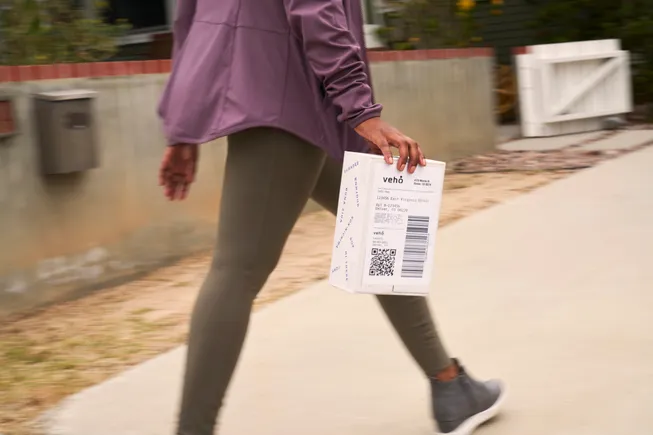AI is transforming parcel delivery for companies like FedEx, UPS, and Veho by improving delivery time estimates, reducing package theft, and enhancing customer support.
How AI is Revolutionizing Parcel Delivery: FedEx, UPS, and Veho Lead the Way
Introduction
Artificial intelligence (AI) is becoming an essential tool for parcel delivery companies, enhancing the way they interact with shippers and consumers. Industry leaders like FedEx, UPS, and Veho are leveraging AI to offer more precise shipping time estimates, reduce the risk of package theft, streamline customer service processes, and help customers analyze their delivery data. With AI’s ability to process and synthesize vast amounts of information, parcel delivery services are becoming more reliable and efficient, benefiting both companies and consumers alike.
AI’s Role in Parcel Delivery
AI is playing a crucial role in improving the overall parcel delivery experience. From providing more accurate delivery windows to helping prevent package theft, the technology is helping delivery companies streamline operations. Tony Kreager, enterprise VP of data, digital, and commercial technology at FedEx, believes that AI is a “true change agent” for the company’s future. FedEx has already utilized AI to divert volume from its Memphis hub during severe weather, ensuring timely deliveries while maintaining operational efficiency.
UPS has also integrated AI to optimize its network capacity, helping the company manage fluctuating shipment volumes and keep labor costs in check. The ability to adapt operations in real-time with AI offers significant benefits, including better resource allocation and improved delivery precision.
Enhancing Delivery Precision with AI
FedEx’s Global Delivery Prediction Platform is a prime example of how AI is helping companies offer more accurate delivery windows. By combining real-time shipment data with last-mile delivery details, FedEx can provide customers with a two-hour delivery window for most shipments on the day of arrival. This advanced system uses AI-driven models that factor in street-level geography, giving customers reliable, near-real-time information about when their packages will arrive.
“Customers want near real-time visibility to their shipments and are refreshing fedex.com and the mobile app to know when exactly that important outfit or gift will arrive,” Kreager explained. AI’s predictive power has become a key asset in helping companies like FedEx deliver on customer expectations.
Veho, an alternative carrier using gig drivers, is also tapping into AI to provide more precise delivery time estimates. The company’s technology considers factors beyond simple driving time, such as the number of packages being delivered and individual driver performance metrics. For instance, delivering multiple large boxes to an apartment will naturally take longer than delivering a small package, and Veho’s AI system accounts for these variations in its predictions.
Reducing Package Theft with AI
AI is also helping companies tackle the growing issue of package theft, or “porch piracy.” UPS’ DeliveryDefense service uses AI and machine learning to predict the likelihood of a successful delivery at a given address. By analyzing factors such as location, the number of delivery attempts, and package loss frequency, the system can determine whether a delivery should be rerouted to a safer location before the shipping label is even printed.
This technology allows UPS and its customers to make smarter decisions about where to deliver packages, ultimately reducing the risk of theft. According to Bala Subramanian, EVP and Chief Digital and Technology Officer at UPS, “AI helps create simple actionable scores that identify 2% of addresses that drive more than 30% of shipping losses.” This proactive approach is just one of the ways AI is enhancing the security of parcel deliveries.
AI-Powered Customer Support and Data Insights
Beyond improving delivery precision and security, AI is also transforming how companies handle customer service and parcel data. UPS, for example, uses generative AI to automate responses to some of the 52,000 customer emails it receives each day. During a pilot program, the company saw a 50% reduction in the time it took agents to resolve inquiries, making customer service more efficient and responsive.
Additionally, shippers are using AI to analyze their own delivery data and make more informed decisions. ShipScience, a software provider for parcel auditing, has developed the ParcelAI chatbot, which can quickly answer questions about shipping data, such as comparing carrier performance or time-in-transit speeds. By integrating with shippers’ data from carriers like FedEx and UPS, the AI chatbot helps logistics professionals access critical insights faster, improving their decision-making process.
The Challenges of Implementing AI in Parcel Delivery
Despite AI’s many benefits, integrating the technology into parcel delivery operations is not without challenges. Companies must invest in the right talent, build the necessary infrastructure, and ensure they have access to clean, accurate data to fully realize AI’s potential. According to Sri Sripada, managing director at West Monroe, “There’s a barrier around access and availability of clean data, which allows you to integrate all those data elements and put those AI models on top.”
Without high-quality data, AI models cannot generate accurate predictions or deliver meaningful insights. As AI continues to evolve, parcel delivery companies will need to focus on improving their data management practices to ensure they can maximize the technology’s value.
Conclusion
AI is transforming the parcel delivery industry, with major players like FedEx, UPS, and Veho leading the charge. By leveraging AI to improve delivery time estimates, reduce package theft, and streamline customer service processes, these companies are delivering more reliable and efficient services. While challenges remain, especially in terms of data management, the future of AI in parcel delivery looks promising. As the technology continues to advance, shippers and consumers alike will benefit from faster, more secure, and more informed delivery experiences.

